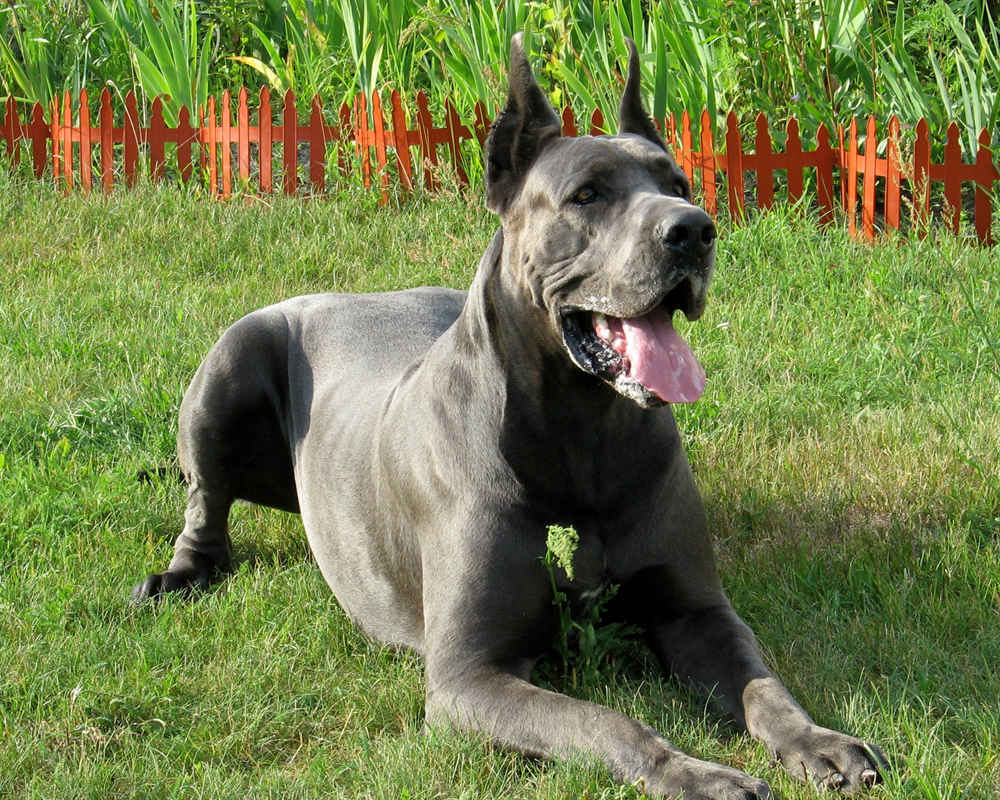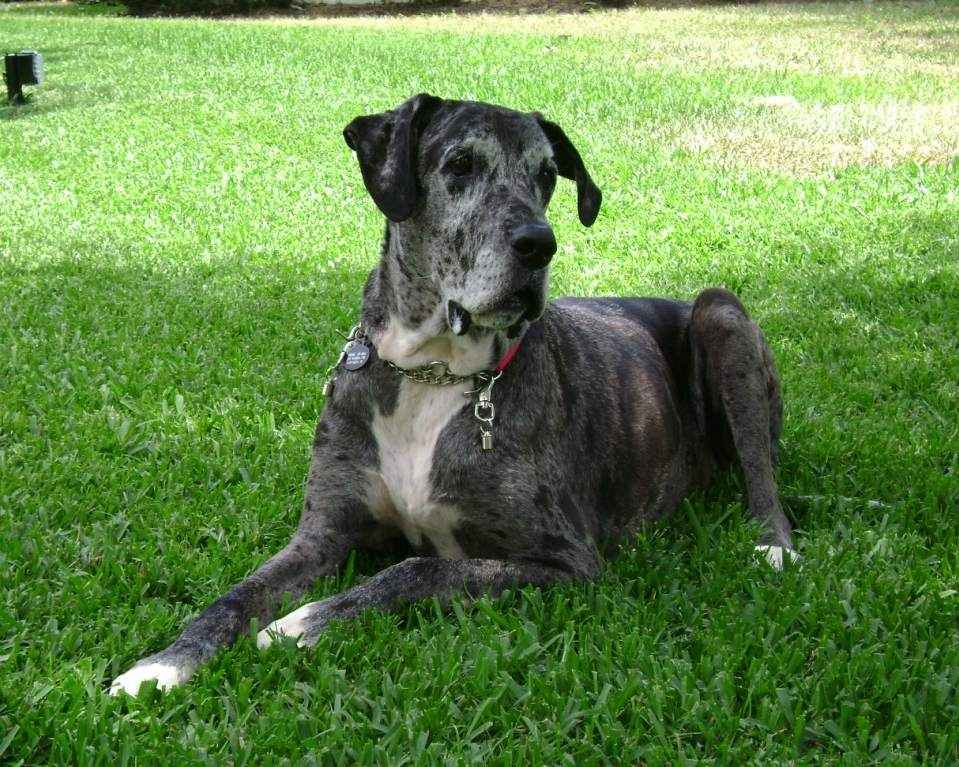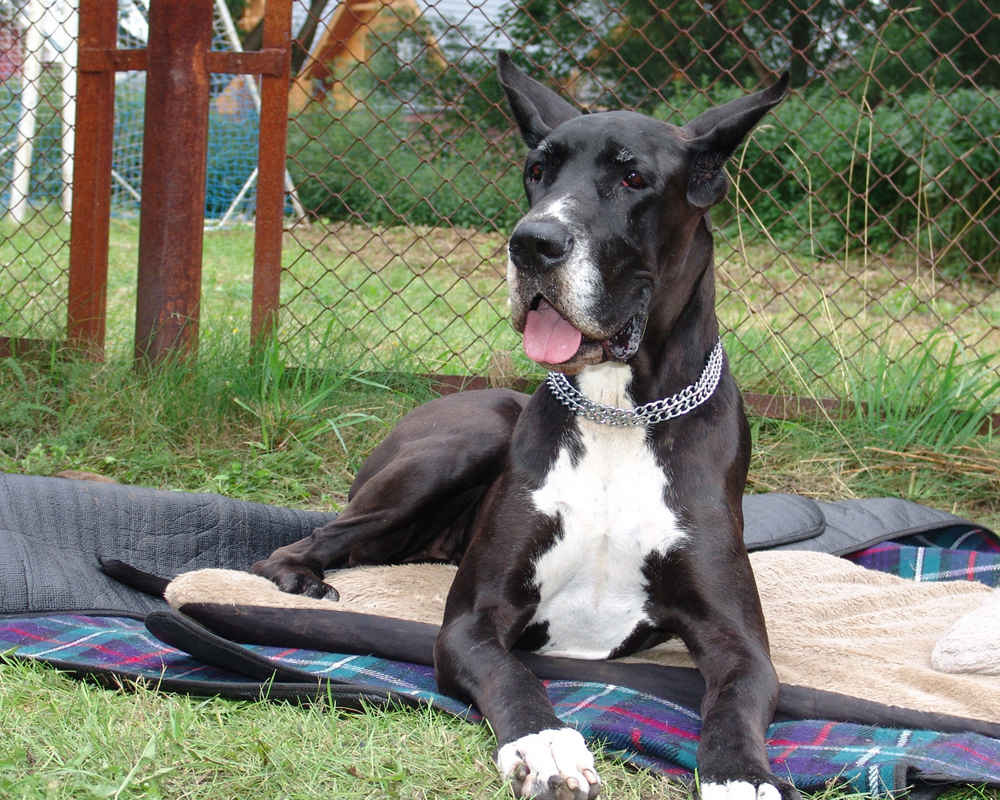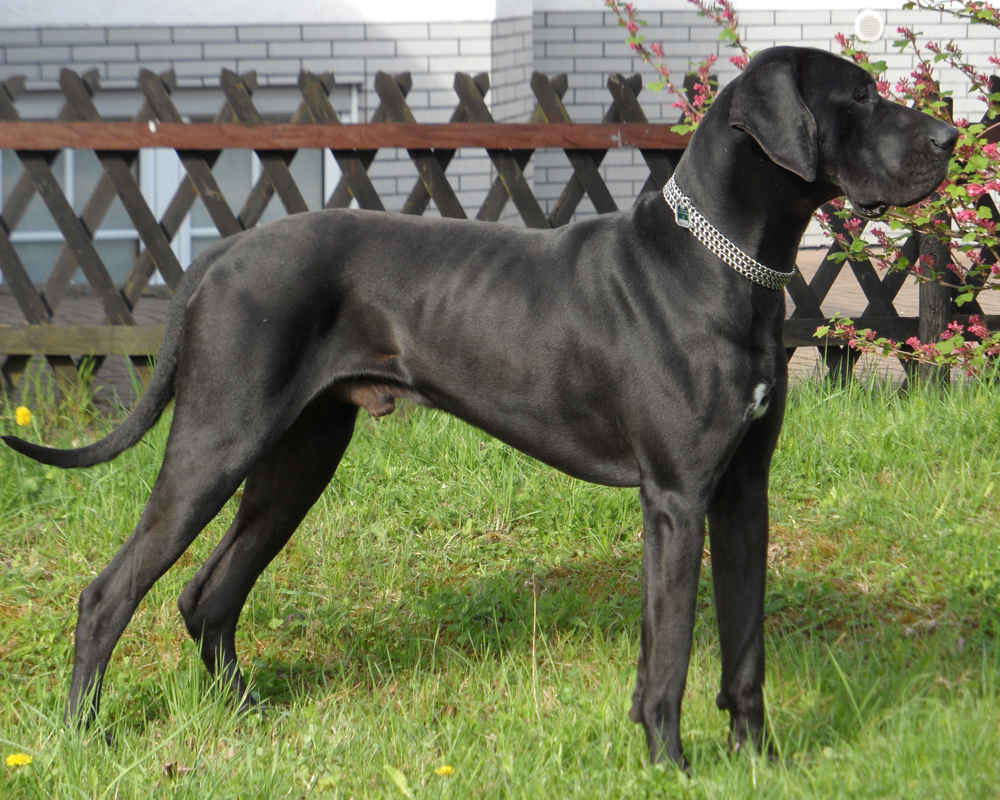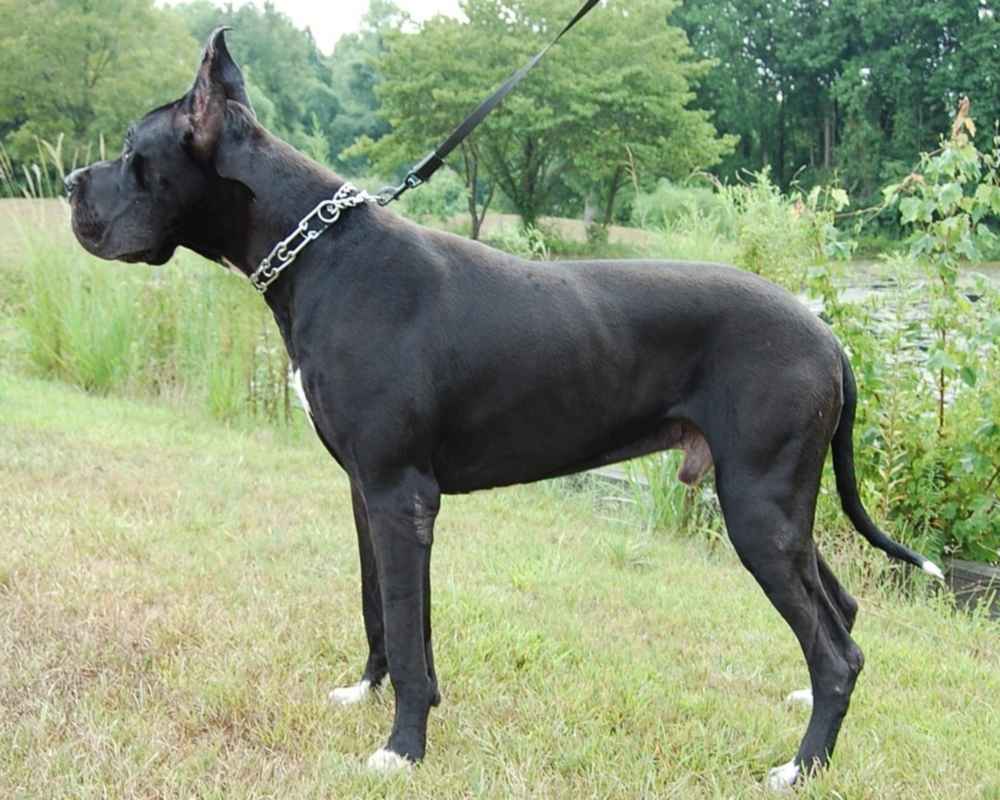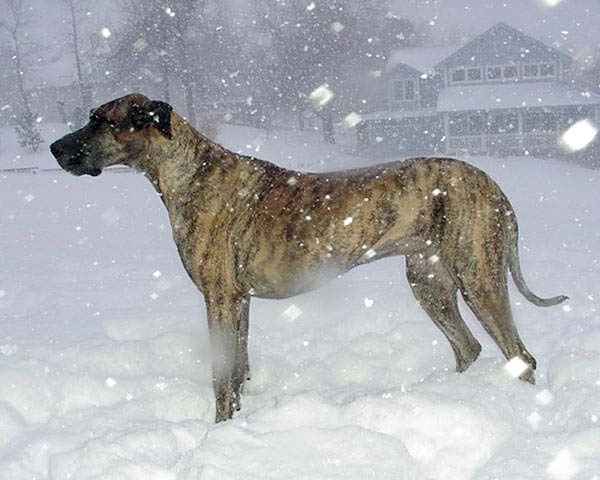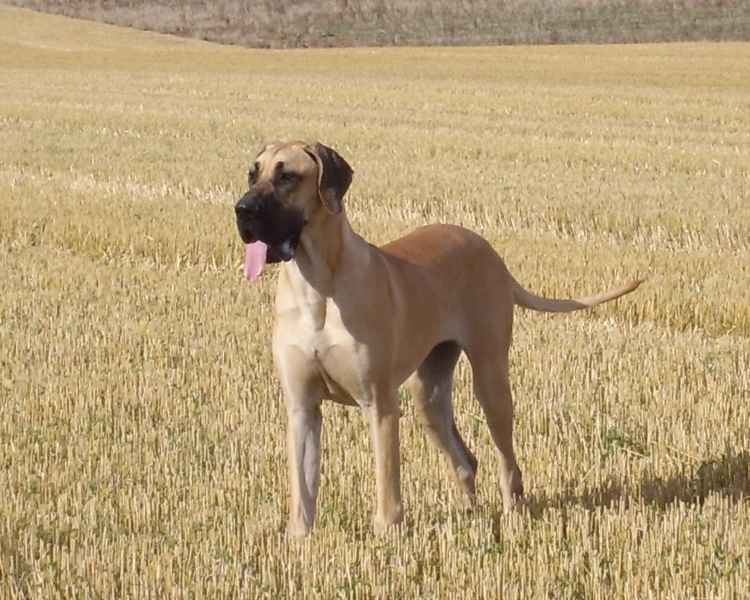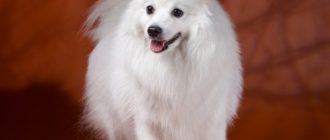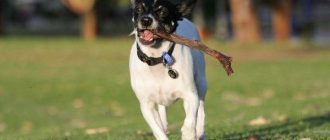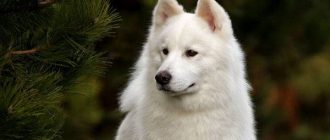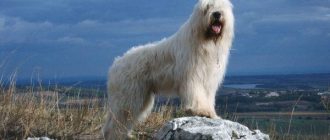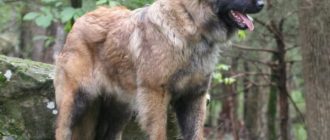Great Dane, Grand Danois, Deutsche Dogge
Contents

Breed characteristics
- Popularity: 10
- Training: 5
- Size: 10
- Mind: 5
- Security: 9
- Relations with children: 9
- Dexterity: 5
- Shedding: 5

Story
Great Dane – a dog widely known throughout the world, not only due to its impressive size and appearance, which it is impossible to confuse, but also due to the soft, good character. Title dogs the Great Dane is now generally accepted, though, in the middle century used the name Danish Great Dane and others.
In particular, the word “dog” was applied to dogs of especially large sizes and similar physique, and various varieties of these animals were classified and could have different names, например “Ульмский дог” (Ulmer Dogge),”German dog” (Great Dane),Great Dane (Hatzrude), Boar Dog (Saupacker), Large Great Dane (Grosse Dogge), Great Dane (Englische Dogge) and Danish dog “(Danische Dogge). The name was given depending on the locality and dog application.
Despite the fact that the Great Dane was widely known in the Middle Ages, it arose not in Europe, and the times of its appearance the predecessors of modern Great Danes attribute us to the 3rd millennium BC. and earlier. Research by scientists shows that ancestors Great Danes met in ancient Egypt, as evidenced by archaeological finds, as well as in Babylon (2 millennium BC. e.).
In the Babylonian temples of this period you can find images dogs, surprisingly reminiscent of dogs. Also, Assyrian merchants sold these pets to the ancient Greeks and Romans, the latter distributed them around the world. In addition, both Greeks and the Romans crossed dogs with other breeds in order to increase sizes, increasing endurance and other important qualities. there is opinions that Irish played a significant role in the formation of the breed wolfhound and irish greyhound.
In the Middle Ages, these dogs were widely bred in the territory of modern Denmark and Germany, and in the 16th century, Great Danes used to hunt wild boars. By the way, stopping the ears takes its origin is from hunting – ears were cut so as not to give a boar tear them during the bout. At the end of the 16th century among German the aristocracy has a fashion for keeping dogs in luxury, when the dog wore a golden collar and ate from the master table, not knowing what hunting is. They were called Kammerhunde.
The name of the breed “Danish Great Dane” appeared in the 18th century with the filing the French naturalist who called these dogs “Grand Danois” although Danish breeders were not particularly concerned with breed development. Title fixed and used for quite a long time, until 1880 years when breeders and judges at a dog show held a meeting, setting the first breed standard and clearly dividing English mastiff and the Danish Great Dane bred by them.

Description
Great Dane – a large dog, one of the largest in the world. The growth of the male at the withers reaches 80 cm, sometimes more, the growth of bitches – 72 cm at the withers. Weight can reach 90 or more. Limbs long, muscular, chest is voluminous and clearly defined, abdominal cavity deep. The muzzle is large, square, the ears are usually are copied. The tail is medium length. Color can be different, from plain to spotty.

Personality
To date, the dog breed German Great Dane has quite peaceful, calm and even affectionate in nature. What, by the way, the merit of the early breeders involved the formation of the personality of breed representatives from the middle of 19 century. The good-naturedness and openness of the Great Dane is literally manifested in everything – he is happy to spend time with his family members, whether an adult or a child, always looking for an opportunity to serve the owners, distinguished by obedience and nobleness of manners.
However, so that your pet has such a truly perfect doggy character, it will be necessary to make some efforts on his upbringing. Great Dane breed dog by default is good refers to children, and although it’s not quite suitable for the role of a nanny, always glad to play various games with them, go to have a walk and just have fun.
At the same time, you must understand that children are too small, who still do not know how to behave properly with a dog, alone with such large animals should not remain. Especially, that the dog could accidentally push the baby, or cause injury to him without intent, but purely because of its size. Great Dane possess excellent intelligence, understand the owner perfectly, and with close contact know how to guess his desires, feel emotional state.
Dog breed German Great Dane loves people and nothing can be done about it. not allowed. Especially if you are raising your pet correctly, and provide him with early socialization, he will be friendly treat everyone, including strangers.
We can say that if the dog sees the owner’s good attitude towards to a stranger, she will also treat him well, but if it’s an offender, your dog will try to defend itself. And given its size and awesome appearance, sometimes even a simple hint on the part of the Great Dane, it is enough for the offender to retreat. In general, for security and protective purposes, dogs are rarely used, because of their friendliness. Rather it is a companion dog, friend, faithful companion for the whole family.
Great Dane dog loves attention and does not tolerate loneliness. So, you most likely have to take your pet with yourself, if you are going to rest with your whole family. Love to human attention and affection can lead to the fact that the dog will seek any opportunity to climb onto your lap, in bed or sofa. So, do not rush to pamper your dog – this burden may be too heavy for you. Moreover – in literally.

Training
Since the Great Dane usually has a flexible and kind disposition, and tries to please the owner, problems in his training are usually not arises. Parenting is best started from an early age as one year old dog is much more difficult to train, and at the age of 2 years to change the character is almost impossible, or extremely heavy. Great Dane can be trained in both simple and complex teams, he is a smart and smart dog.

Care
Great Dane is a breed of smooth-haired dog and therefore not Needs frequent combing of wool. Always keep clean eye – they need to be cleaned of deposits daily. Also necessary brush the dog’s ears 2-3 times a week, and trim the claws once a ten days. Bathe an animal once a week or more often, depending from living conditions and necessity.
Keep in mind that Great Dane is a dog that eats a lot, and therefore it is important to select a quality diet. In food, this breed not picky, if the owner has not spoiled, of course.

Common diseases
Great Dane Dog Breed Has Some Health Problems and prone to certain diseases, including:
- developmental problems – growth problems can develop in puppies and young individuals. Sometimes they are associated with malnutrition – often high in protein, calcium or supplements;
- hip dyspalmia is hereditary disease;
- bloating, or bowel obstruction;
- bone cancer – sometimes known as osteosarcoma, this is the most common bone tumor in dogs, especially large dogs the size of such a tumor can occur not only in the elderly, but also in young age. heart disease, which include: dilated cardiomyopathy, mitral valve defects, tricuspid dysplasia, subaortic stenosis, open arterial duct and permanent right aortic arch;
- surgical problems are slightly different in German Great Danes than in small dogs. For any necessary operation you need to look for a surgeon who has experience working with dogs of a giant breed. Ask for a preoperative blood test and coagulation profile. blood.
Breed Information
| A country | Germany, Denmark |
| Life span | 8-12 years old |
| Height | Males: 76-86 cm Bitches: 71-81 cm |
| Weight | Males: 54-90 kg Bitches: 45-59 kg |
| Long wool | short |
| Colour | brindle, black, blue, brown |
| Group | for children, guard |
| Price | $ 800 – $ 1,600 |
Breed photo
